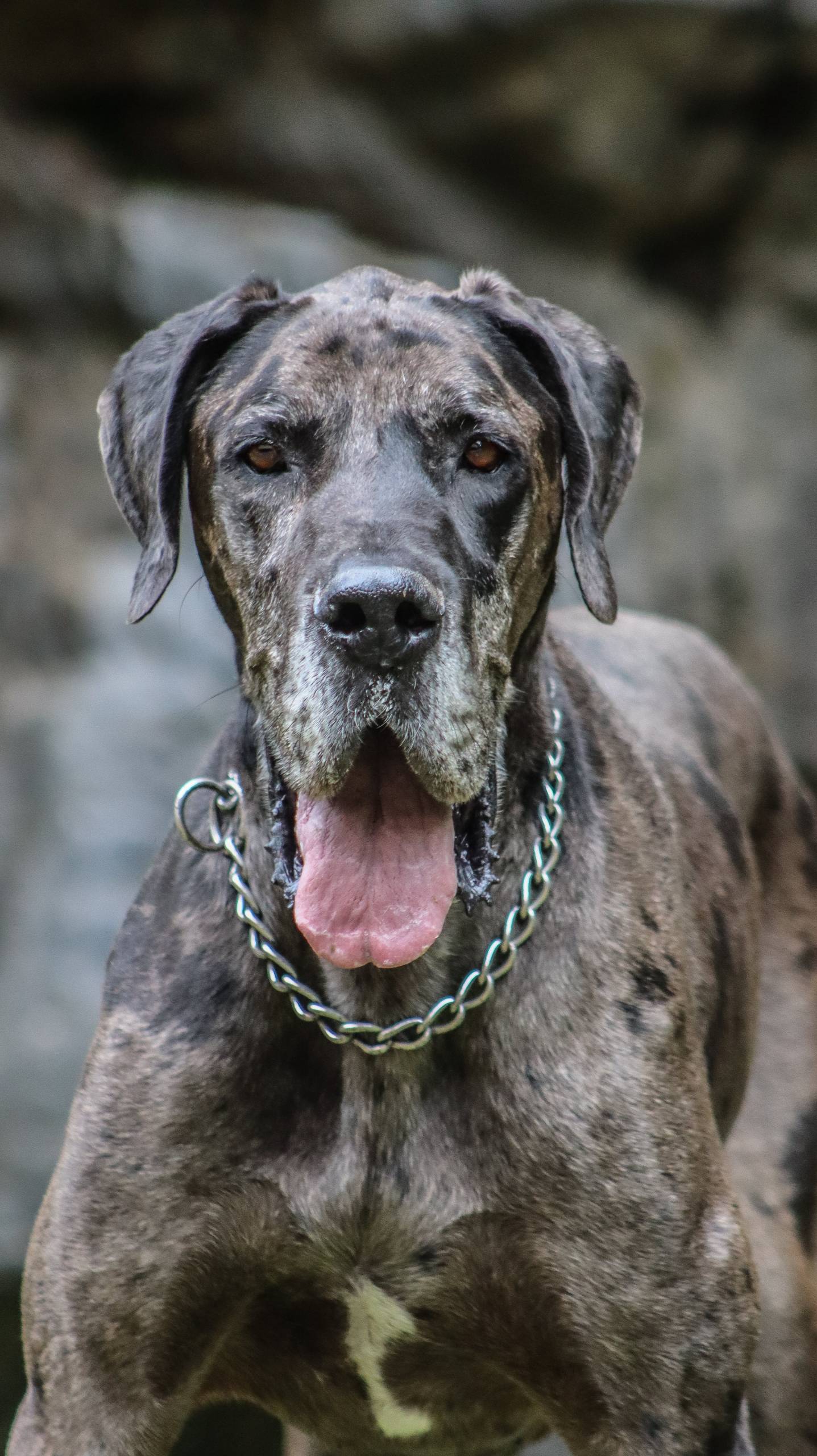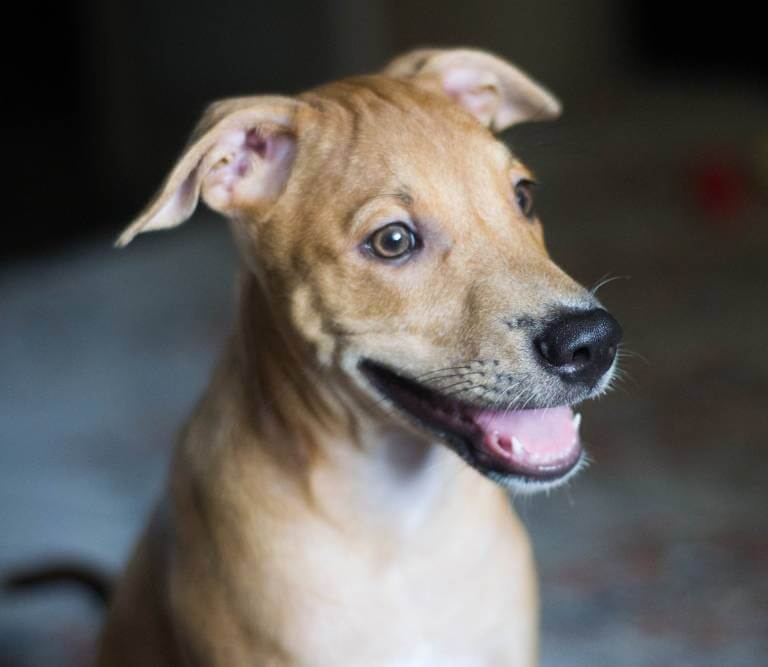How to draw a realistic dog?
Post Date:
January 18, 2024
(Date Last Modified: November 13, 2025)
Drawing a realistic dog combines observation of anatomy, confident construction, and attention to texture and light to make a subject read convincingly in any pose.
Materials & Workspace
Choose tools and a workspace that let you control line quality and rendering consistency; set up so visual decisions are repeatable and comfortable. Aim for focused work cycles of about 25–50 minutes with short breaks of 5–10 minutes to reduce fatigue and maintain steady hand control [1].
- Pencils: a range (2H–6B) for hard construction lines through soft finished shading.
- Pens/inks: waterproof fineliners for line work and brushes for washes.
- Digital: tablet with pressure sensitivity, a 2048+ pressure level setting, and 2–3 custom brushes for line, texture, and blend.
- Surface & lighting: mid-tone paper and consistent daylight-balanced lighting when possible.
Set your reference display at eye height and keep the drawing surface at a comfortable elbow height to minimize neck and shoulder strain for typical desk setups [1].
Canine Anatomy Fundamentals
Understand the skeleton first: the domestic dog typically has 7 cervical, 13 thoracic, 7 lumbar, 3 sacral, and about 20–23 caudal vertebrae, and those counts shape spine length, ribcage position, and tail set [2].
Focus on a few surface muscle groups that most strongly affect silhouette—neck/shoulder mass, pectoral and forearm groups, epaxial chain along the spine, pelvic/gluteal mass, and thigh/calf groups—about five broad areas to prioritize when converting bone into form [3].
Breed variation changes proportions and gait: some breeds have proportionally longer backs or shorter limbs, and skull types range from long-muzzled to flat-faced, which alter how you place eyes, nasal bridge, and jaw planes [3].
Gathering and Using References
Select clear photos and video frames that show the pose, lighting, and scale you need; collect a small set of 3–6 references that together cover anatomy, texture, and motion for the pose you plan to draw [4].
Combine close anatomical images for bone and muscle, mid-distance photos for proportion and silhouette, and short video clips or sequential frames to study how joints extend and compress during gait [4].
Proportions and Basic Shapes
Block the figure into simple geometric forms before detailing: spheres for joints, cylinders for limbs, and boxes or ovoids for skull and ribcage; a disciplined block-in reduces proportion errors early on [5].
| Breed type | Typical head:body ratio | Notes |
|---|---|---|
| Toy/Companion | 1:2.5–1:3 | Relatively large head vs compact body |
| Sighthound/Hound | 1:3.5–1:4 | Long skull and lean torso for stride |
| Working/Utility | 1:3–1:3.5 | Balanced proportions for strength and endurance |
| Mastiff/Brachycephalic | 1:2.8–1:3.2 | Broader skull, heavier mass |
Use sighting and comparative measurement—align a finger or tool to compare head length to body length and confirm you’re within the expected band for the breed type before committing to detail [5].
Gesture and Pose
Start with a single flowing action line that captures the spine’s curve; aim to lock in the primary gesture in about 10–30 seconds of quick sketching so you capture balance and energy without over-rendering [4].
Check weight distribution visually: in standing poses the center of gravity sits roughly between fore and hind limbs; in a typical standing dog the center lies about 40–60% of body length measured from the nose toward the tail depending on stance and breed [3].
Indicate tension with compressed volumes and shortened limb foreshortening; show relaxation through elongated lines, softer joint angles, and looser chest and belly arcs [4].
Constructing the Volume
Lay a lightweight skeletal framework, then wrap the major muscle and fat volumes so surfaces read as believable masses that respond to rotation and perspective; think in 2–4 construction passes—skeleton, block masses, corrective anatomy, surface detail—and refine each pass [4].
Use cross-contour lines on cylinders and ribcage ovoids to indicate rotation and to guide lighting; when a limb foreshortens, shorten the visible segments proportionally and maintain overlap rules so the nearer segment visually dominates [5].
Facial Features and Expression
Place the eye approximately midway on the head’s vertical axis for many breeds, and use the plane changes of the eyelid and brow to suggest depth; when measuring, the eye center often sits about 50% of head height from top to muzzle base in mesocephalic skulls [2].
For the nose, map the nasal plane as a shallow truncated cone and indicate wetness with small specular highlights; place nostrils at the lower nasal plane and align the mouth and teeth with visible jaw hinge landmarks for believable expression [2].
Ear placement varies with breed; note that pendulous ears attach along the zygomatic arch zone while erect ears sit above and slightly forward of the eye line, and fold patterns change volume and shadowing accordingly [3].
Fur, Texture, and Coat Patterns
Indicate hair flow with strokes that follow underlying volumes rather than surface texture alone; for short-coated dogs use shorter, denser strokes that conform to muscle lines, and for long-coated breeds use longer directional strokes that suggest clumping and curvature [3].
Differentiate coat components: many double-coated breeds have an undercoat that is shorter and denser with guard hairs that can be 2–6 mm longer at peak length, so render layered strokes and tone transitions to suggest depth [3].
Map markings by mass first—block patches of color as simplified volumes—then refine edges and hair direction where patterns wrap over shoulders, flanks, and limbs to maintain correct form-reading.
Light, Shadow, and Final Rendering
Begin with a 3-value study—dark, midtone, and light—to establish the primary read of volume and contrast before adding fine detail [4].
Account for ambient occlusion where forms meet (ears to head, limb to body) as subtle deepening of tone, and reserve 1–2 small specular highlights on the wet nose and eyes to sell moisture and life [5].
Refine by sharpening edges selectively: keep softer, blended edges in shadowed or background areas and use crisp edges around focal points such as the eye and mouth; when erasing highlights, reintroduce tiny reflected lights along rims to suggest form.
Practice Routines and Exercises
Develop a repeatable practice routine that separates quick gesture work from longer, focused studies to accelerate observational skills. Try 3–5 sessions per week of 30–60 minutes each, reserving the first 10–15 minutes for quick thumbnails and the remainder for a single, concentrated study [4].
During thumbnails aim for 8–12 poses executed in 30–90 seconds each to train rapid proportion judgment and silhouette reading; follow those with 1–2 longer studies of 20–40 minutes that emphasize construction, values, and texture [4].
When practicing anatomy, cycle through at least five targeted focus areas per week (skull planes, ribcage rotation, forelimb junction, pelvic assembly, and facial detail) so that over several weeks each subsystem receives concentrated attention and cross-referencing against reference material [2].
Troubleshooting Common Problems
If your proportions feel consistently off, return to a block-in stage and use 2–3 comparative measurements (for example: head length, body length, limb length) to reestablish relationships before adding detail [5].
When values read as muddy, reduce the range to a simple 3-value study (dark, midtone, light) and ensure the darkest dark is separated from midtone by at least one value step and the lightest light is reserved for specular highlights and bright reflections [4].
If fur appears flat, add 2–4 layered passes: a directional base lay-in that follows muscle flow, a secondary pass to suggest clumping and edge behavior, and 1–2 finish passes for stray hairs and specular accents, adjusting stroke length to reflect short vs long coats [3].
Progression and Critique
Track progress with targeted metrics: complete 20–50 focused studies over a 6–12 week period instead of many unfocused drawings, and compare early and recent works to measure improvements in proportion, anatomy accuracy, and confident mark-making [4].
Solicit external critique from 2–3 informed peers or mentors and present 3–4 views of the same pose (gesture, construction, values, and final render) to get actionable feedback on stage-by-stage decisions rather than only final aesthetics [4].
Use photographic references as benchmarks: gather 3–6 complementary images per study (one for proportion, one for close anatomy, one for lighting, and one for movement) so decisions about texture and form are grounded in observed detail rather than memory alone [4].
Recommended References and Next Steps
Build a compact reference shelf that includes at least one authoritative anatomy source for bone and muscle, one breed guide for proportion standards, and one technical drawing manual for practice methods; consult primary anatomy references for accurate landmark placement and breed guides for proportion bands [2][5][4].
For photographic and motion references prioritize high-resolution images and short video clips shot at 30–60 frames per second to freeze useful moments of stride and joint rotation; use frame-by-frame playback to study how foreshortening and overlap change across the gait cycle [4].
Advance by combining focused anatomy drills with long-form renderings: alternate weeks that emphasize structural studies (bone, muscle, proportion) with weeks devoted to finished renderings that synthesize volume, fur, and light so technical knowledge translates into visual realism [2][3].
Practice consistently, observe closely, and prioritize clear construction and lighting choices so drawings convey believable form and life.
Sources
- osha.gov — Ergonomics and work-rest guidance.
- merckvetmanual.com — Canine skeletal and soft tissue anatomy.
- vcahospitals.com — Breed, coat, and clinical anatomy references.
- metmuseum.org — Art technique and practice recommendations.
- akc.org — Breed type proportions and standards useful for proportion reference.




